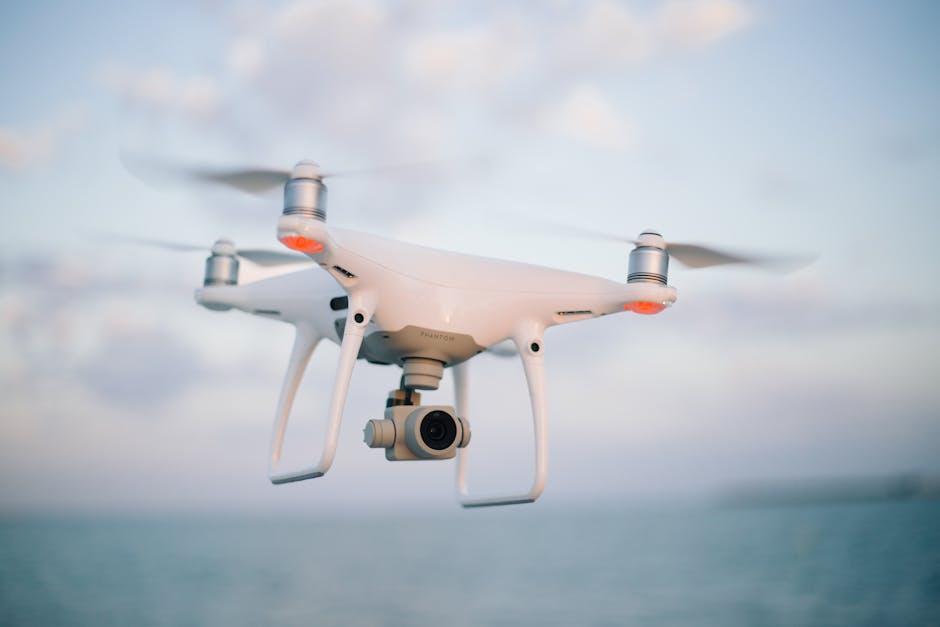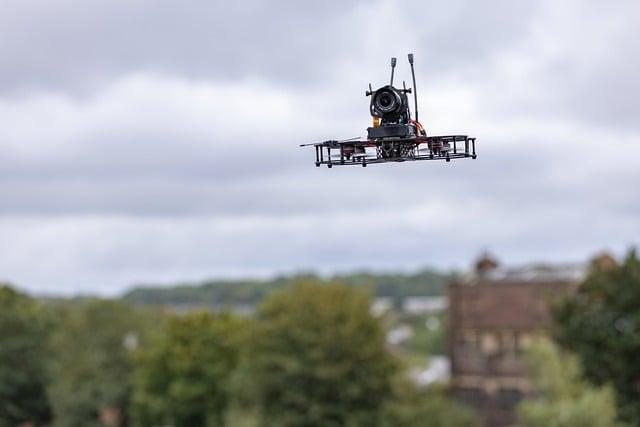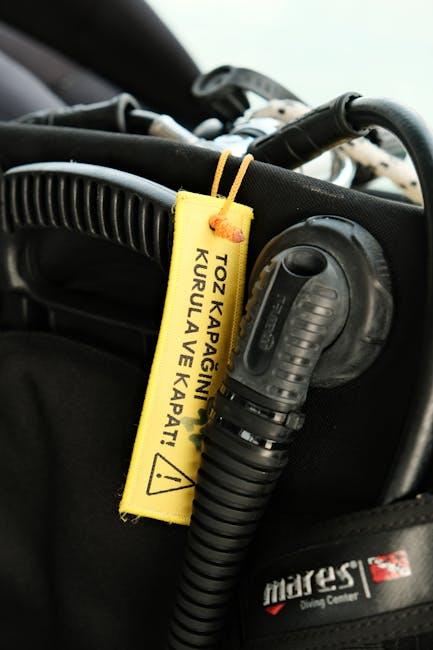In the ever-evolving world of filmmaking, where imagination meets technology, a silent revolution is taking flight—literally. Drones, once confined to the realm of military and hobbyist use, have soared into the spotlight, reshaping the art of cinematography. As these nimble aerial devices glide through the sky, they offer filmmakers unprecedented creative freedom, capturing breathtaking vistas and dynamic sequences that were once impossible or prohibitively expensive. This article delves into how drone technology is transforming the cinematic landscape, unlocking new storytelling possibilities, and redefining the visual language of modern film. Join us as we explore the skies and uncover the innovative ways drones are elevating the art of storytelling.
Elevating Perspectives: The Aerial Revolution in Filmmaking
The advent of drone technology has ushered in a new era of visual storytelling, offering filmmakers unprecedented creative freedom and the ability to capture breathtaking vistas previously reserved for big-budget productions. Drones have democratized aerial cinematography, enabling even independent filmmakers to infuse their projects with dynamic, sweeping shots that were once the exclusive domain of helicopters and cranes.
- Cost-Effectiveness: With drones, filmmakers can achieve stunning aerial views without the prohibitive costs of traditional methods.
- Versatility: Compact and agile, drones can navigate tight spaces and challenging terrains, providing unique perspectives.
- Innovation: As technology evolves, drones are equipped with advanced stabilization and high-resolution cameras, pushing the boundaries of what’s visually possible.
By redefining the boundaries of cinematographic expression, drones have become indispensable tools in crafting immersive narratives that captivate audiences worldwide.

Precision and Creativity: Harnessing Drone Capabilities for Unique Shots
In the realm of modern cinematography, drones have emerged as a tool that bridges the gap between precision and creativity, offering filmmakers the ability to capture breathtaking shots that were once unimaginable. The agility of drones allows for seamless transitions and dynamic angles, providing a fresh perspective that traditional equipment cannot match. Whether it’s sweeping over vast landscapes or weaving through urban environments, drones enable filmmakers to explore new visual narratives.
- Innovative Angles: Drones can hover at precise heights, delivering unique overhead views and intricate tracking shots.
- Cost-Effective Solutions: Compared to helicopters or cranes, drones offer a more budget-friendly option without compromising on quality.
- Unrestricted Movement: With advanced stabilization technology, drones provide smooth footage even in challenging conditions.
- Enhanced Accessibility: Filmmakers can now access hard-to-reach locations, capturing scenes that add depth and richness to storytelling.
By harnessing these capabilities, directors and cinematographers can push the boundaries of their craft, crafting visual experiences that resonate with audiences in new and exciting ways.

Mastering the Skies: Essential Drone Techniques for Cinematographers
The evolution of drone technology has unlocked a new realm of possibilities for cinematographers, allowing them to capture breathtaking aerial views that were once limited to big-budget productions. With advancements in stabilization and camera quality, drones offer filmmakers the opportunity to explore new perspectives and craft visually stunning narratives. To harness the full potential of these flying cameras, mastering essential techniques is crucial.
- Dynamic Movement: Experiment with various flight paths such as orbits, reveals, and tracking shots to create engaging sequences that draw viewers into the story.
- Layered Composition: Use the drone’s altitude to frame shots with natural elements like mountains, forests, or cityscapes, adding depth and context to the scene.
- Lighting Mastery: Take advantage of natural light during golden hours to enhance mood and atmosphere, transforming ordinary scenes into cinematic masterpieces.
Integrating these techniques can elevate the quality of your projects, providing a fresh perspective that resonates with audiences and redefines storytelling in modern cinematography.
 Regulations: Ensuring Compliance in Aerial Filmmaking”>
Regulations: Ensuring Compliance in Aerial Filmmaking”>
Navigating Regulations: Ensuring Compliance in Aerial Filmmaking
As drone technology continues to redefine the art of cinematography, filmmakers must adeptly maneuver through a labyrinth of regulations and compliance requirements. These rules, designed to ensure safety and privacy, vary significantly across regions, making it crucial for filmmakers to stay informed and adaptable. Ignoring these regulations can result in hefty fines or legal repercussions, hindering creative projects and tarnishing reputations.
- Research Local Laws: Understand the specific regulations in the area where you plan to film. This includes airspace restrictions, altitude limits, and permissions required.
- Obtain Necessary Permits: Many locations require permits for drone usage. Ensure all paperwork is completed well in advance of filming.
- Prioritize Safety Protocols: Implement strict safety measures to protect crew, equipment, and the public. Regularly update risk assessments and emergency procedures.
By prioritizing compliance, filmmakers can focus on harnessing the creative potential of drones without the looming threat of regulatory pitfalls.

